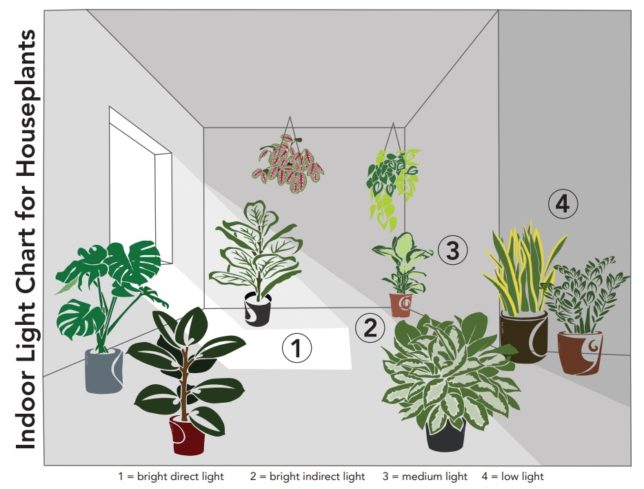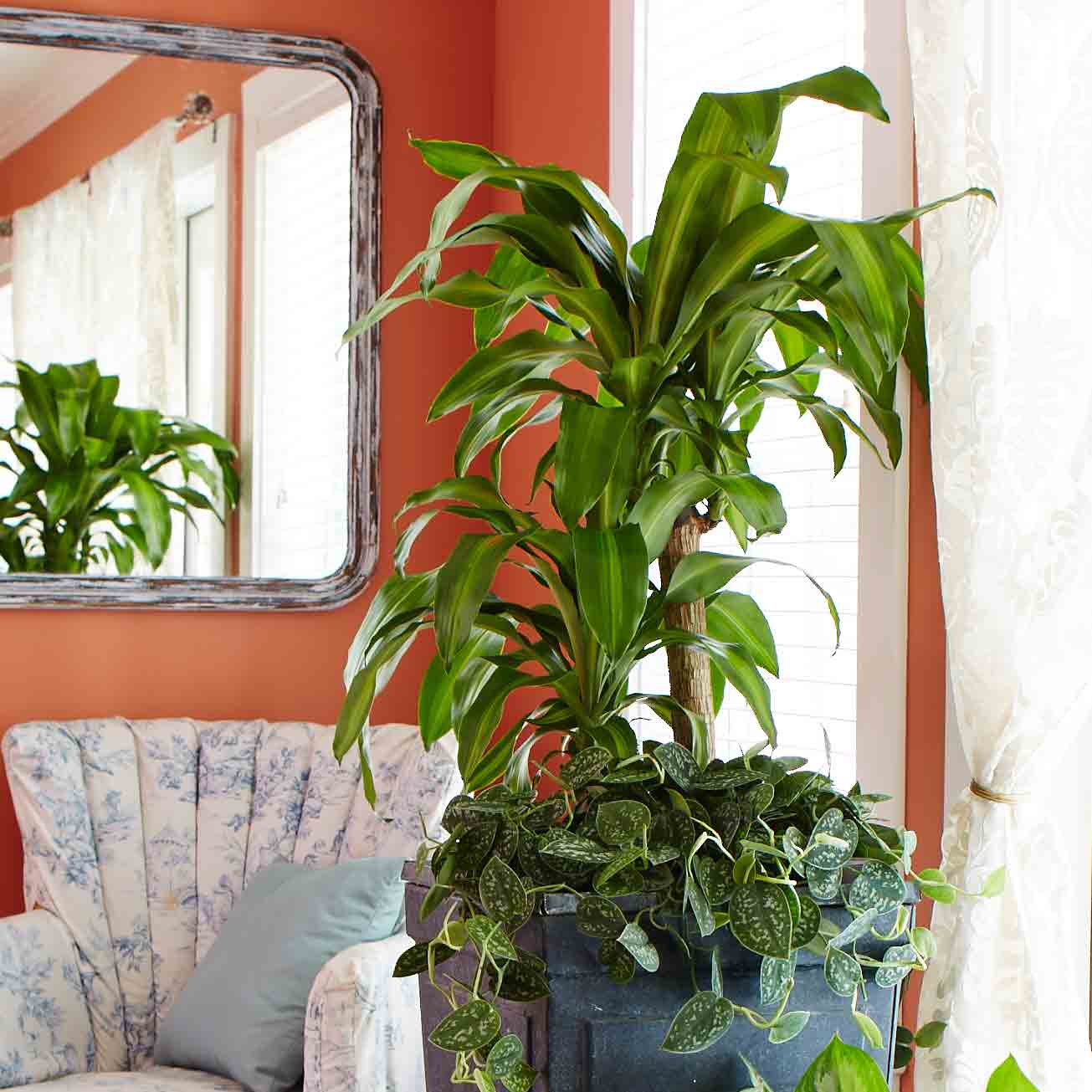Explore the Best Low-Light Indoor Plants for Easy and Stylish Home Decor
Explore the Best Low-Light Indoor Plants for Easy and Stylish Home Decor
Blog Article
Transform Your Home With Beautiful Low-Light Indoor Plants and Their Benefits
Incorporating low-light indoor plants right into your home can significantly enhance both the ecological and aesthetic quality of your space. These plants, which flourish in dark problems, serve not just as ornamental elements however also as natural air purifiers, making them ideal for metropolitan occupants or those with minimal sunshine direct exposure. As we check out the different sorts of low-light plants and their benefits, you may find surprising ways to integrate them into your home that can change your surroundings in methods you might not have actually expected.
Benefits of Low-Light Plants
Low-light plants provide countless benefits for indoor settings, making them a superb selection for both beginner and skilled gardeners. Among the key advantages is their flexibility to low-light problems, allowing individuals to boost their space without the demand for extensive sunshine exposure. This characteristic makes them perfect for houses, offices, and other locations with minimal all-natural light.

Moreover, including low-light plants into home decoration can raise the visual appeal of a room. Their rich vegetation and differed textures develop a calming atmosphere, contributing to total health. The presence of plant has actually been linked to reduced stress degrees and enhanced efficiency, making low-light plants a functional selection for boosting both mental and physical health in interior settings.
Leading Low-Light Indoor Plants
While many interior plants thrive in intense light, a number of species are particularly well-suited for low-light conditions, making them excellent for numerous interior rooms. One prominent selection is the Serpent Plant (Sansevieria), understood for its striking upright leaves and durability, calling for very little care. One more outstanding alternative is the Pothos (Epipremnum aureum), which includes heart-shaped fallen leaves and can track beautifully from hangers or shelves, flourishing in low light and adding a rich touch.
The ZZ Plant (Zamioculcas zamiifolia) is commemorated for its shiny fallen leaves and capacity to endure overlook, making it best for hectic way of lives. Likewise, the Tranquility Lily (Spathiphyllum) not just endures low light however likewise produces stunning white blooms, boosting any space's visual.
For a special touch, think about the Cast Iron Plant (Aspidistra elatior), which without a doubt lives up to its name, prospering in the darkest corners of your home. The Chinese Evergreen (Aglaonema) provides a selection of fallen leave patterns and shades while being exceptionally forgiving in low-light problems. These plants not only beautify indoor environments yet likewise add to air purification, boosting your home.
Care Tips for Low-Light Plants

Watering techniques are Continued important; these plants frequently prefer a little dry problems. Overwatering can lead to root rot, so make certain that the leading inch of dirt is completely dry prior to sprinkling once more. Use pots with water drainage openings to allow excess wetness to run away.
Moisture is an additional vital factor. Lots of low-light plants, such as ferns and peace lilies, gain from greater moisture levels. To increase moisture, think about misting the fallen leaves or positioning a tray of water near the plants.
Fertilizing ought to be approached with caution. Throughout the growing season, use a watered down, balanced fluid plant food on a monthly basis to sustain development, however avoid feeding throughout the dormant cold weather.

Innovative Ways to Present Plants
Indoor plants can act as captivating prime focus in any kind of area, boosting both aesthetic allure and atmosphere. Innovative screens can boost the aesthetic influence of low-light plants, making them an integral part of your home style. One efficient method is to use tiered plant stands, which allow you to display several plants at varying heights while making best use of flooring space.
Hanging planters are another innovative choice, producing a sense of deepness and attracting the eye upward. Consider macramé wall mounts or wall-mounted shelves to present an unique appearance and style.
For a more organized strategy, use geometric terrariums or glass containers to house your plants, including a modern touch to your interior garden. You can additionally repurpose classic products, such as teacups or wood crates, for an eclectic display that mirrors your character.
Enhancing Home Ambiance With Plants
Incorporating low-light plants into your home not only improves aesthetic charm yet also contributes dramatically to the overall atmosphere. These plants work as natural decor aspects, introducing a feeling of harmony that can change any type of space. The presence of greenery promotes a relaxing environment, which is specifically valuable in high-stress settings such as office or living rooms.
Low-light plants, such as serpent plants, pothos, and ZZ plants, are not only visually pleasing yet additionally enhance interior air high quality by filtering contaminants. This twin feature improves the setting better, creating a much healthier home (Best low-light indoor plants). The tactical positioning of these plants can likewise influence the understanding of room; for example, tall plants can attract the eye upwards, making ceilings appear greater and areas much more spacious
Furthermore, differing textures and shades of foliage add depth to interior decoration, enabling creative expression in home styling. Whether positioned on shelves, in edges, or as centerpieces, low-light plants can raise the state of mind of any type of room. In summary, incorporating these plants into your home is an effective way to promote a warm, welcoming atmosphere while profiting of boosted air quality and aesthetic flexibility.
Final Thought
Integrating low-light interior plants right into home settings provides countless benefits, consisting of enhanced aesthetic charm and improved air top quality. These resistant plants, such as the Serpent Plant and Tranquility Lily, require very little light and upkeep, making them appropriate for diverse way of livings.
While numerous this hyperlink interior plants prosper in bright light, a number of varieties are specifically fit for low-light problems, making them excellent for numerous interior areas. One efficient approach is to utilize tiered plant stands, which enable you to display numerous plants at differing heights while optimizing flooring space.
Low-light plants, such as serpent plants, pothos, and ZZ plants, are not only cosmetically pleasing however likewise boost indoor air top quality by filtering system pollutants. Best low-light indoor plants. The tactical placement of these find more info plants can also influence the assumption of room; for instance, tall plants can attract the eye upward, making ceilings show up greater and spaces more roomy
These durable plants, such as the Serpent Plant and Tranquility Lily, require very little light and upkeep, making them suitable for varied way of livings.
Report this page